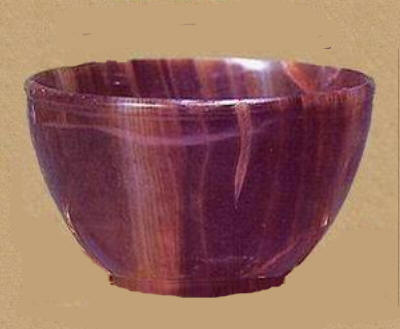|
|
||
| The Holy Grail is, for Christians, the cup used by which Jesus drank wine at the Last Supper . It has been held in high esteem as a historically authentic object that was used by Jesus himsel. It is a relic of singular importance for Christians because they see it as as evidence of the truth of the Gospels. Over the centuries, 40 different cups have been claimed to be the Holy Grail - the chalice . Today, the Catholic Church has eliminated all but one claimant - the Holy Chalice of Valencia | ||
|
People of all eras have wondered what has become of this precious
relic, which has generated a considerable number of fantastic
stories about knights, monks and kings embarking on a quest to find
it. The story of the Holy Grail has spawned numerous works of
fiction and fantasy, including popular films. The truth about the
actual existence of whereabouts of the cup is less clear. Perhaps because of the mystery and fantasy that have surrounded this legendary relic, scholars have created scenario by which the Holy Grail can be just about anything associated with Jesus. Others define the Grail as nothing more than a personal quest, or an exploration of self, or link it with all sorts of ancient legends and fertility rites, leading to a great deal of confusion about what it actually is Most scholars believe that the Cenacle |
 |
|
|
-- the room where the Last Supper took place -- and the Holy Cup were the property of the family of St. Mark. It is further believed that St. Mark gave the chalice to St. Peter because he was thought to be head of the Church. Spanish tradition claims that St. Peter took the Holy Cup with him to Rome, where it was passed on to his successors until the Valerian persecution of 258. Over the centuries Many have claimed to possess the authentic Holy Grail, which goes well with the old saying that if all the supposed relics of the True Cross were gathered together, there would be enough wood for a dozen crosses. The facts are sometimes mixed with false claims and legendary material in such a way that it casts doubt on the possibility of ever knowing the truth. It is true that by the 16th century there were about 20 cups that claimed the honor of being the authentic cup used by Jesus at the Last Supper. But today none of these are considered authentic by the Catholic Church -- with the exception of the Holy Chalice of Valencia and the silver cup of Antioch. The cup of Antioch has a two-liter capacity and is much too large to have been passed around the table of the Last Supper for the Eucharist. What is interesting, however, is the fact that St. Jerome mentions that there were two cups on the table of the Last Supper, a silver cup that held the wine for the meal, and one of stone that was used for the institution of the Eucharist. Only the Holy Chalice of Valencia, with its upper cup of agate stone, fits St. Jerome's description of the cup used by Christ for the consecration. When one examines its tradition and history in detail, it is quite evident that everything makes perfect sense. I don't believe that anything could ever disprove the theory that the Holy Grail is indeed the Holy Chalice of Valencia, Spain. One serious rival in popular opinion, is the legend that Joseph of Arimathea brought the Holy Grail to England. This belief is based on the poem Joseph of Arimathea by the poet Robert de Boron, who confirms an apocryphal legend of Nicodemus, adding that Joseph brought the Grail to Glastonbury, thus joining Christianity to the bones of the legendary Arthur that are supposedly buried there. The story relates that Joseph collected the blood of Christ in a vessel that had served as a dish for the bread and the paschal lamb at the Last Supper, and later gave it to the Celtic god Bron who took it to the West as a talisman of immortality. Currently, the de facto winner of the claim to authenticity is the chalice at Valencia. Pope St Sixtus II celebrated Mass using the Valencia cup, a cup of dark reddish brown agate, which recent archaeological studies have claimed dates from 100-50 BC. Over the years the chalice has been embellished with engraved gold handles and has an alabaster base which is Islamic in style. It is claimed that the grail was taken to Rome by St Peter and kept by other popes until St Sixtus II who gave the cup to his deacon, St Lawrence. St Lawrence took the chalice to his homeland for safekeeping. During the Islamic invasion in 713AD the cup was reported to have been hidden in the Pyrenees for safekeeping. It was not until 1399 that the chalice was handed over to the King of Aragon who kept it in his royal palaces. In 1424 the royal reliquary was moved to Valencia Palace and this collection was later presented to the Cathedral in 1437. The Church in Spain went to great lengths to protect the vessel from the Muslim invasion in the eighth century, and years later we see the same respect and heroic courage in those who saved the cup from destruction during Spain's War of Independence and Civil War. In 1982 the Pope Francis became the very first Pope to say Mass with the relic since St. Sixtus II in the third century, and today Christians worldwide venerate this very special cup. |
||